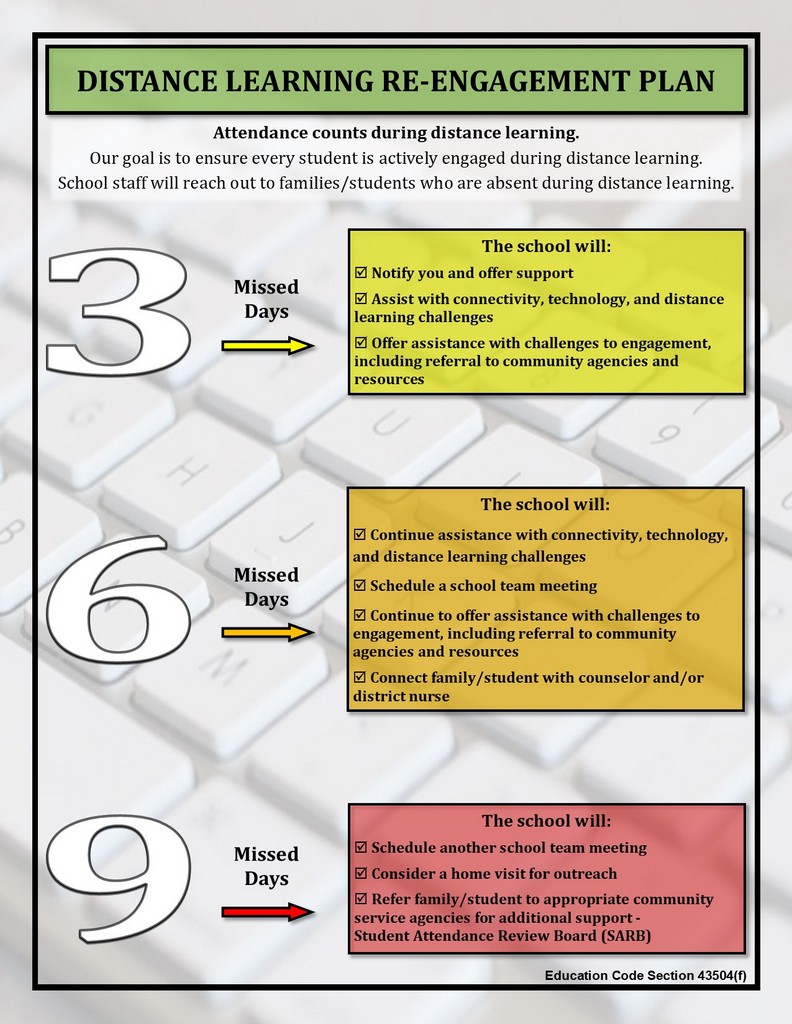Angels Camp – How much does it matter that your student participates in distance learning? It matters, just as much as when students are on school campuses. The Student Attendance Review Board (SARB) is in full force even during the distance learning model and is focused on supporting families and connecting them with services that will help struggling students get back on a successful track. Established by law, SARB is a multi-disciplinary team with representation from schools, non-profit community organizations, and government agencies. Current SARB members include counselors from our elementary and high school districts, a parent advocate, advocates from The Resource Connection-Calaveras Crisis Center, service professionals from the County Health and Human Services Agency, the District Attorney’s Office, the County Office of Education, and local law enforcement.

Distance learning has two main components to attendance. First, the face to face instructional time with teachers. Second, the completion of classwork. These two components make up daily attendance required by the state of California. Despite the modified learning model, tracking attendance and student performance remains essential because poor attendance can lead to a loss of learning, a student failing their classes, and potentially losing an entire grade level.
The goal of educators is to have students thriving in the class setting, keeping up with course work and making academic progress. Even through the virtual world, daily interaction has inherent benefits that are missed when school is missed. “Teachers and peers may be the first to notice when a student is struggling with their well-being. Social interactions, a predictable schedule, sleep, and exercise are key components to the health of a student, and going to school can support these,” explained school counselor Lori Oliver.
A “Distance Learning Re-Engagement Plan” was created as a guide for families to understand the importance of attendance and as a map for the steps that will be taken when a student does not attend classes. This new tiered system establishes actions that will be taken based on the number of days a student misses. With the 3, 6, 9 model, the school action plan begins with contacting the families, assisting with connectivity and technology, and helping with challenges that are hindering attendance. “This new model presents an opportunity for SARB to reaffirm its function as a support for the success of our students,” stated District Attorney Barbara Yook.
Superintendent of Schools Scott Nanik expressed that, “Schools are providing the needed resources to students to ensure their academic success. It is so important that families communicate with the school about their specific needs.”
###


